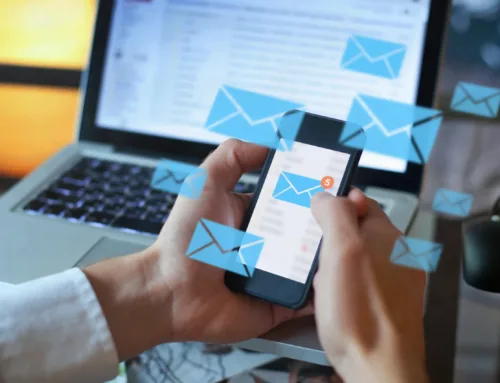Key Takeaways
| Aspect | Detail |
|---|---|
| Definition | An email marketing campaign is a series of emails sent to nurture leads and engage customers, ultimately aiming to increase sales. |
| Audience Identification | Knowing your target audience is critical for creating personalized and effective email campaigns. |
| Campaign Goals | Define clear goals for your campaign, whether it’s brand awareness, lead nurturing, or revenue generation. |
| Types of Campaigns | Different campaign types like promotional, awareness, or re-engagement cater to various business objectives. |
| Timing | Sending emails at optimal times increases open rates, with the best times being mid-week mornings or evenings. |
| Tools and Platforms | Utilize platforms like Mailchimp for campaign management and optimization. |
Crafting the Perfect Email Marketing Campaign
In today’s digital age, where customers are inundated with information, creating a standout email marketing campaign is more crucial than ever. At Send It Rising, we understand the importance of email marketing as a pivotal tool in the digital marketing arsenal. This guide aims to walk you through the steps to craft a successful email marketing campaign.
Identifying Your Audience
The first step in creating an effective email marketing campaign is understanding your audience. A deep understanding of your brand’s demographic is essential for crafting personalized emails that resonate with your subscribers and encourage them to engage with your content.
Understanding Your Goals
Defining the goals of your email marketing campaign is critical. Your objectives could range from improving brand awareness to generating sales or increasing website traffic. Knowing these goals helps in tailoring your campaign’s content and strategy to meet these specific objectives.
Deciding on the Type of Campaign
Depending on your goals, there are various types of email campaigns to consider, such as new product announcements, event invitations, or re-engagement emails. Selecting the right type of campaign aligns with your business objectives and audience preferences.
Crafting Your Message
The content of your emails should be concise, easy to read, and mobile-friendly. It’s important to have an engaging subject line and provide value in your message, ensuring that what you offer aligns with the interests and needs of your recipients.
Timing Your Emails
The timing of your email sends can significantly impact their effectiveness. Studies suggest that the best times to send emails are mid-week, specifically on Tuesday, Wednesday, and Thursday, during late morning or early evening hours.
Leveraging Email Marketing Tools
Platforms like Mailchimp can streamline the process of creating, sending, and monitoring your email marketing campaigns. These tools offer features such as email templates, marketing automation, and analytics to enhance the effectiveness of your campaigns.

Maximizing Engagement in Email Marketing
Engagement is the lifeblood of successful email marketing. Here’s how you can maximize it:
Crafting Irresistible Subject Lines
The subject line is your first point of contact with your audience. It needs to be captivating enough to stand out in a cluttered inbox. Think of it as the headline of your email – it should be intriguing, clear, and relevant to the content inside.
Personalization and Relevance
Personalized emails have a higher chance of being opened and engaged with. Use data about your subscribers to tailor your content. This could be as simple as using their name in the email or as complex as segmenting your list based on their past interactions with your brand.
Providing Value
Each email should offer something valuable to your audience. This could be informative content, a special offer, or insights relevant to their interests. Remember, the goal is to make the recipient feel that opening your email was worth their time.
Analyzing and Optimizing Your Campaigns
Continuous improvement is key in email marketing. Here are some strategies for analyzing and optimizing your campaigns:
A/B Testing
Experiment with different elements of your email, like subject lines, content, or send times, and measure how these changes affect your open and click-through rates. A/B testing can provide valuable insights into what resonates best with your audience.
Monitoring Key Metrics
Keep an eye on metrics such as open rates, click-through rates, and conversion rates. These metrics give you a clear picture of how your campaign is performing and where there might be room for improvement.
Seeking Feedback
Don’t hesitate to ask your subscribers for feedback. This can be done through surveys or by analyzing their behavior. Feedback is a goldmine for understanding what your audience truly values.
Best Practices for Effective Email Marketing
To ensure your email marketing campaigns are effective, consider these best practices:
Consistent Branding
Your emails should reflect your brand’s identity and values. Consistent branding helps in building recognition and trust among your subscribers.
Compliance with Regulations
Ensure your email marketing practices comply with regulations like GDPR and CAN-SPAM. This includes getting explicit consent from subscribers and providing an easy way to unsubscribe.
Quality Over Quantity
It’s better to send fewer high-quality emails than to bombard your audience with frequent, low-value messages. Focus on the quality of your content to maintain a healthy relationship with your subscribers.
Advanced Strategies for Elevating Your Email Marketing
To further enhance the impact of your email marketing campaigns, consider integrating these advanced strategies:
Segmenting Your Audience
Divide your email list into smaller segments based on specific criteria like location, purchase history, or engagement level. This allows for more targeted and relevant messaging, which can lead to higher engagement rates.
Using Storytelling
Incorporate storytelling into your emails. A compelling narrative can captivate your audience, making your message more memorable and impactful. Share stories about your brand, customer successes, or industry insights to create a deeper connection with your subscribers.
Leveraging Automation
Email automation tools can help you send timely and relevant messages to your subscribers. Automate welcome emails, anniversary messages, or re-engagement emails to maintain consistent communication with minimal effort.
Integrating Email Marketing with Other Channels
For maximum effectiveness, integrate your email marketing with other digital marketing strategies:
Social Media Integration
Promote your email content on social media platforms and vice versa. Encourage your social media followers to subscribe to your emails, and include social sharing options in your email campaigns.
Coordinating with Content Marketing
Align your email marketing with your content marketing strategy. Use emails to promote your latest blog posts, videos, or other content, and drive traffic back to your website.
Collaborative Campaigns
Partner with other brands or influencers for collaborative email campaigns. This can help you reach new audiences and add fresh perspectives to your content.
Keeping Up with Trends and Technology
The digital marketing landscape is constantly evolving. Stay updated with the latest trends and technologies in email marketing to keep your campaigns fresh and effective. Experiment with new formats, like interactive emails or AI-driven personalization, to stay ahead of the curve.
Optimizing Email Marketing for Mobile Users
With the increasing use of smartphones for email access, optimizing your email campaigns for mobile users is essential:
Mobile-Friendly Design
Ensure your email design is responsive, meaning it adjusts seamlessly to different screen sizes. Use larger fonts, easy-to-click buttons, and a simple layout for better readability on mobile devices.
Concise Content
Mobile users often scan content quickly. Keep your emails concise and to the point, with clear headlines and short paragraphs to enhance readability on smaller screens.
Testing Across Devices
Regularly test your emails on various devices and email clients to ensure they look and function as intended, providing a consistent experience for all subscribers.
Leveraging Data Analytics
In-depth analysis of your email campaigns can uncover valuable insights:
Tracking User Behavior
Use analytics tools to track how subscribers interact with your emails. Look at metrics like which links they click, how long they spend reading the email, and what actions they take afterward.
Segmenting Based on Behavior
Use behavioral data to segment your audience further. For example, you could create a segment for users who frequently click on certain types of links or who have a high engagement rate.
Personalizing Based on Data
Utilize data analytics to personalize your emails. If a subscriber frequently reads content on a specific topic, you can send them more emails related to that interest.
Future Trends in Email Marketing
Stay ahead in the ever-evolving digital landscape by keeping an eye on future trends:
AI and Machine Learning
Artificial intelligence and machine learning can automate and optimize many aspects of email marketing, from personalization to the best time to send emails.
Interactive Emails
Interactive elements like polls, surveys, or embedded videos can increase engagement and provide a more dynamic experience for your subscribers.
Privacy and Security
As privacy concerns grow, ensuring your email marketing complies with data protection laws and prioritizes subscriber privacy will become increasingly important.
Conclusion
Mastering email marketing is a multifaceted endeavor that involves understanding your audience, creating compelling and personalized content, utilizing the right tools and technologies, and continuously adapting to new trends and best practices. By focusing on engaging subject lines, audience segmentation, mobile optimization, and integrating email marketing with other digital marketing strategies, businesses can build stronger relationships with their audience, enhance brand loyalty, and drive significant business growth.
The journey of email marketing is one of constant learning and adaptation. It’s about striking a balance between creativity and data-driven decision-making. By staying informed about the latest trends and technologies and applying these insights to your campaigns, you can ensure that your email marketing efforts remain effective, relevant, and rewarding.
Remember, the success of your email marketing campaign hinges not just on the emails you send but on the relationships you build and the value you deliver to your subscribers. Embrace these principles, and watch your email marketing campaigns transform into a powerful engine for business growth and customer engagement.







Leave A Comment